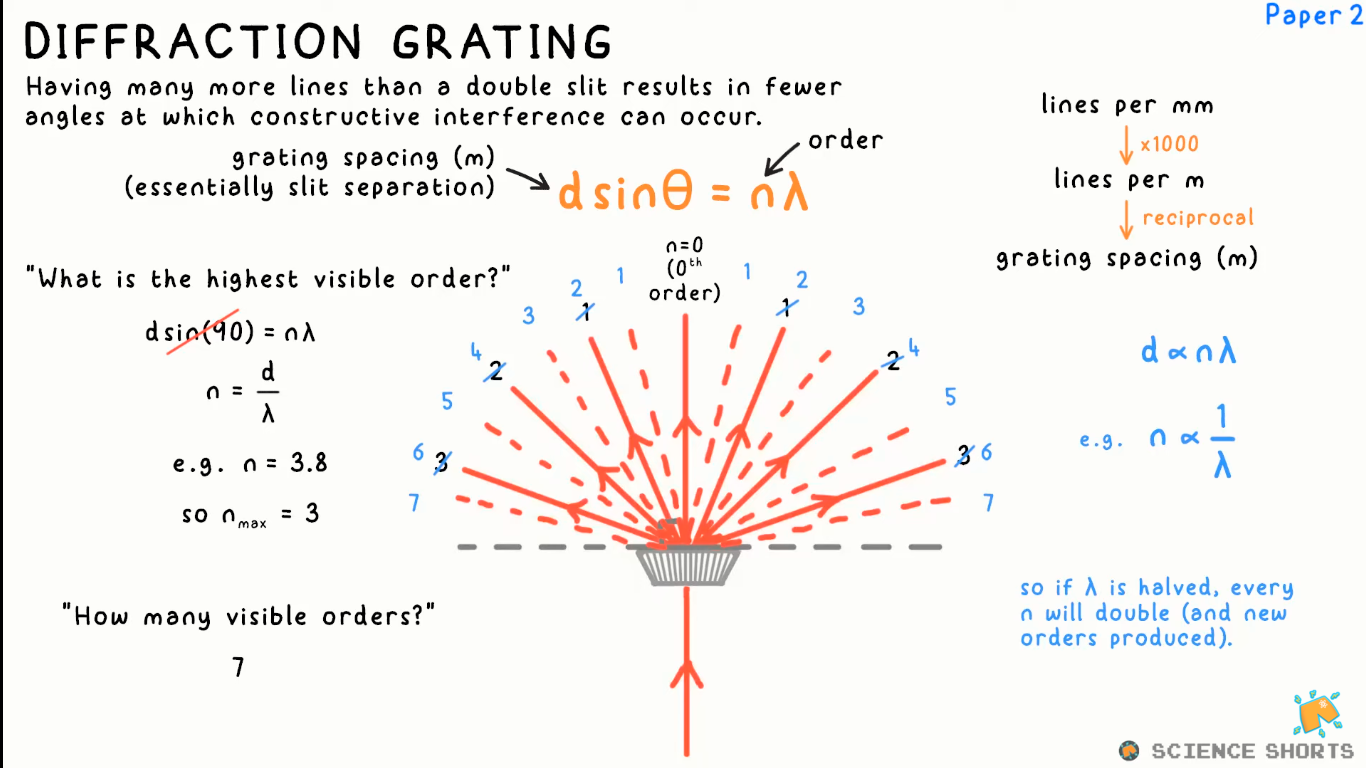Waves
1/24
There's no tags or description
Looks like no tags are added yet.
Name | Mastery | Learn | Test | Matching | Spaced |
|---|
No study sessions yet.
25 Terms
Wave terms
Wavelength, λ: length of one complete wave
Time period, T: time taken for one wave to pass
Frequency, f: the number of waves that pass every second
wave equation
v = fλ
v = wave speed (ms-1)
f = frequency (Hz)
λ = wavelength (m)
Refraction
Change in speed and direction when waves enter a new medium
When speed increases, light bends away from normal
When speed decreases, light bends towards normal
Refractive index
refractive index (n) = c in vacuum / c in medium
Snell’s Law
n1sinθ1 = n2sinθ2
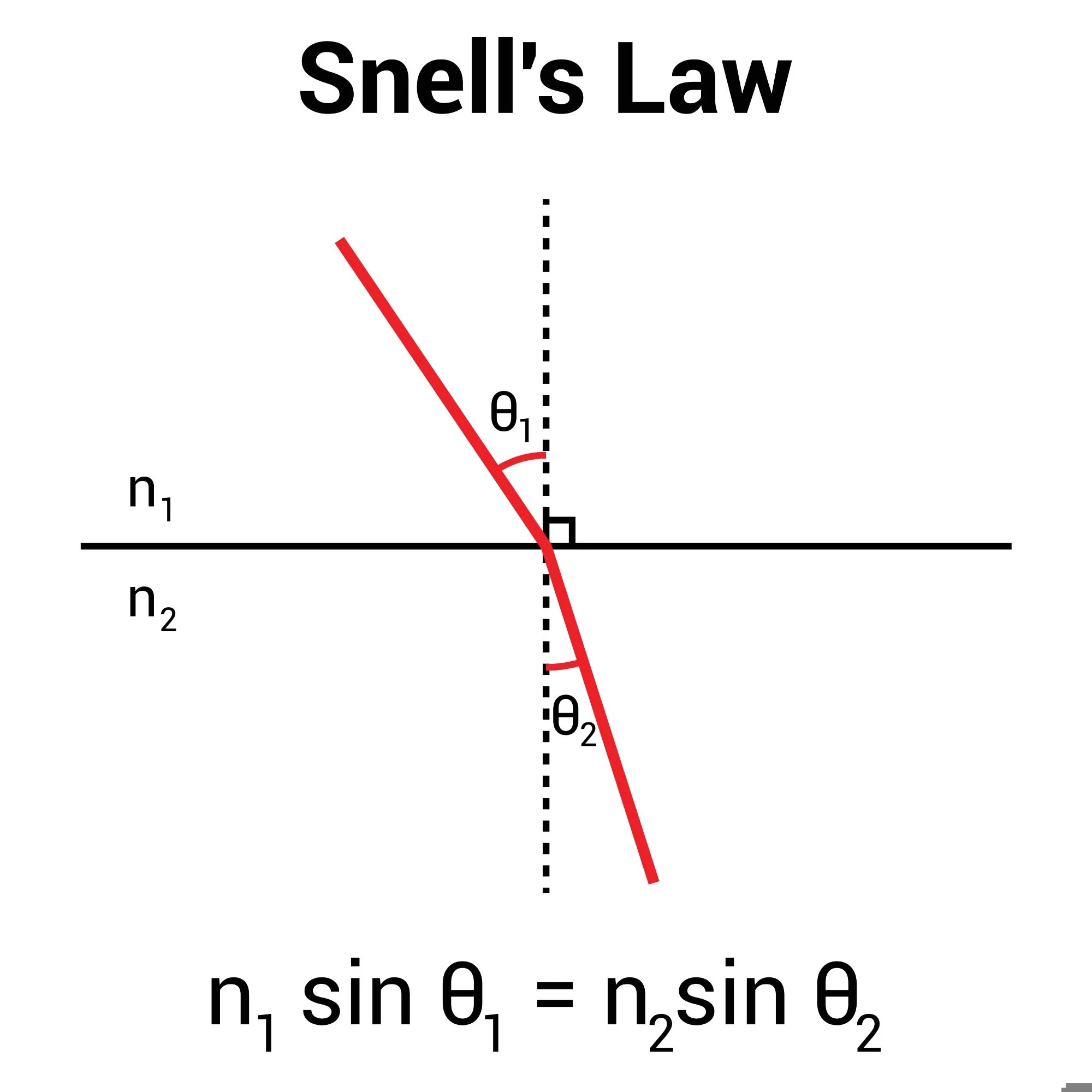
features of a wave during diffraction
Wavelength and and speed change
Frequency stays the same
Total Internal Reflection
Occurs when all light is reflected at a boundary between two different media
Conditions for Total Internal Reflection
incident angle > critical angle
all light reflects
incident angle = critical angle
total internal reflection
incident angle < critical angle
light reflects out
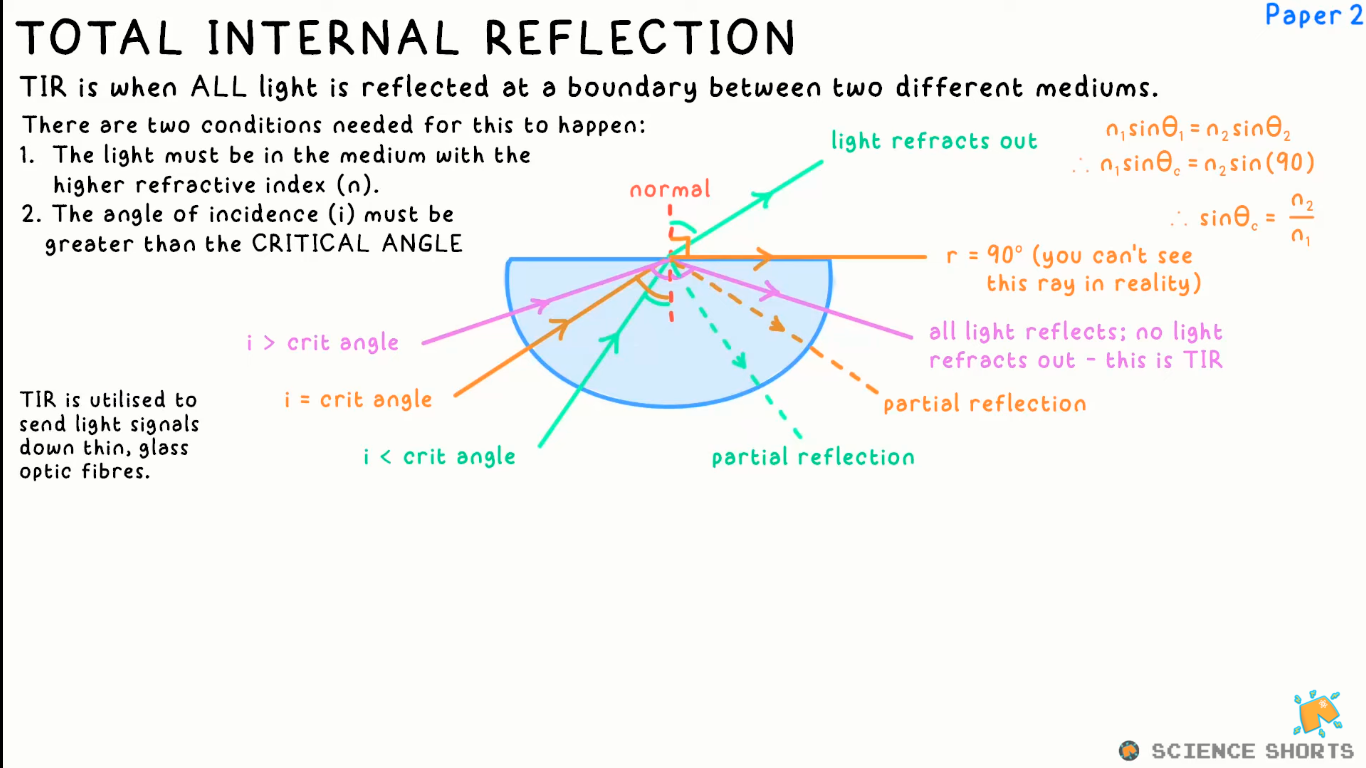
Critical angle
Incident angle at which total internal reflection occurs
n1sinθc = n2sinθ(90)
In air, n2 = 1:
n1sinθc = 1 x 1
sinθc = 1/n1
Polarisation
Transverse waves can be made to oscillate along the same plane
Only transverse waves can be polarised: EM waves are transverse
Progressive wave
Transforms energy from one place to another, without transporting matter
Phase difference
Δd / λ
Separation / wavelength
(Δt / T) x 2π or 360 degrees
Stationary Waves
The result of the interference between 2 waves travelling in opposite directions
They must have the same frequency and wavelength
Phase difference in stationary waves
In phase: both above / below equilibrium
In antiphase: one above one below equilibrium

Stationary waves
Fundamental → L = ½ λ
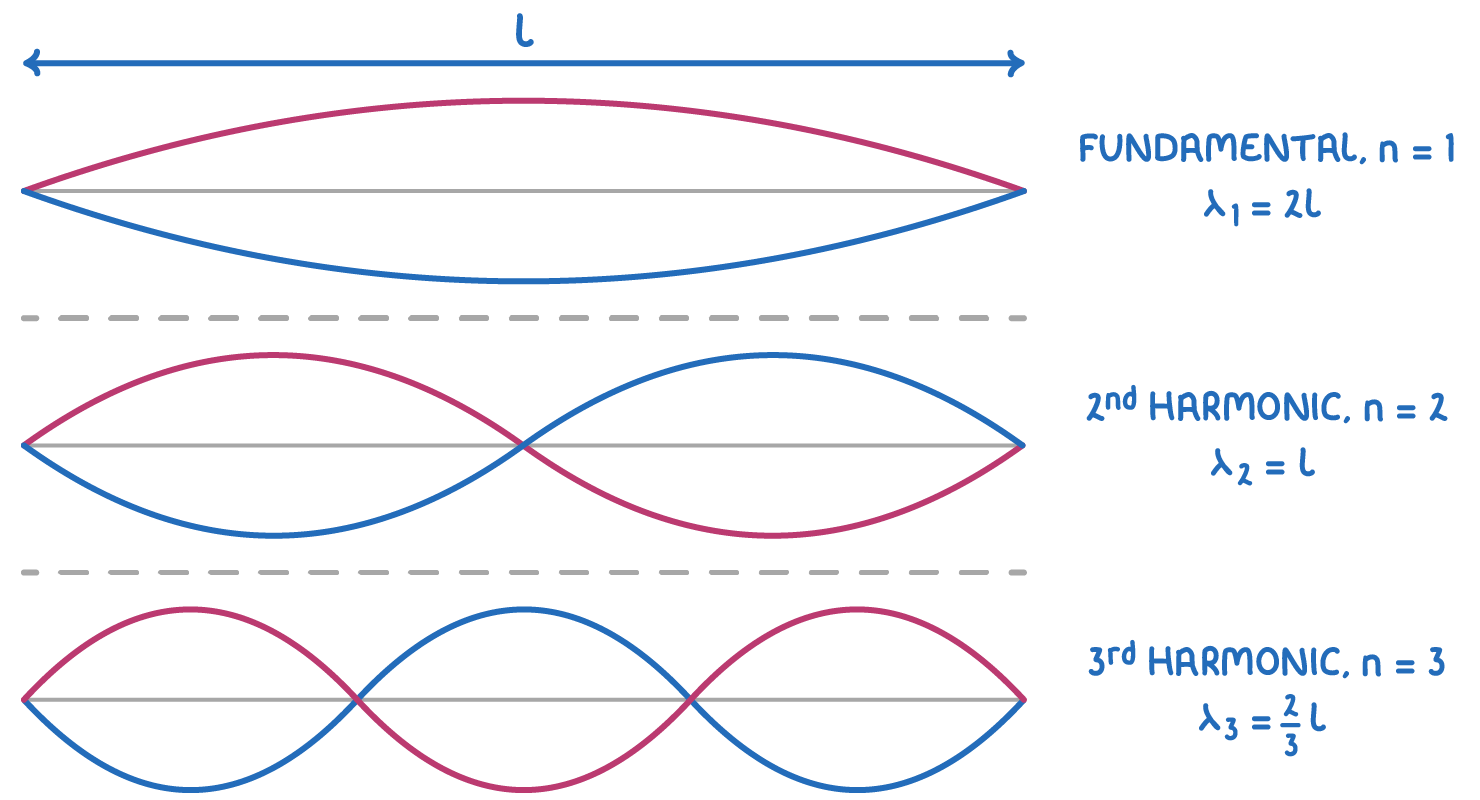
Stationary waves in a closed tube
Fundamental → L = ¼ λ

Stationary waves in an open tube
Fundamental = ½ λ
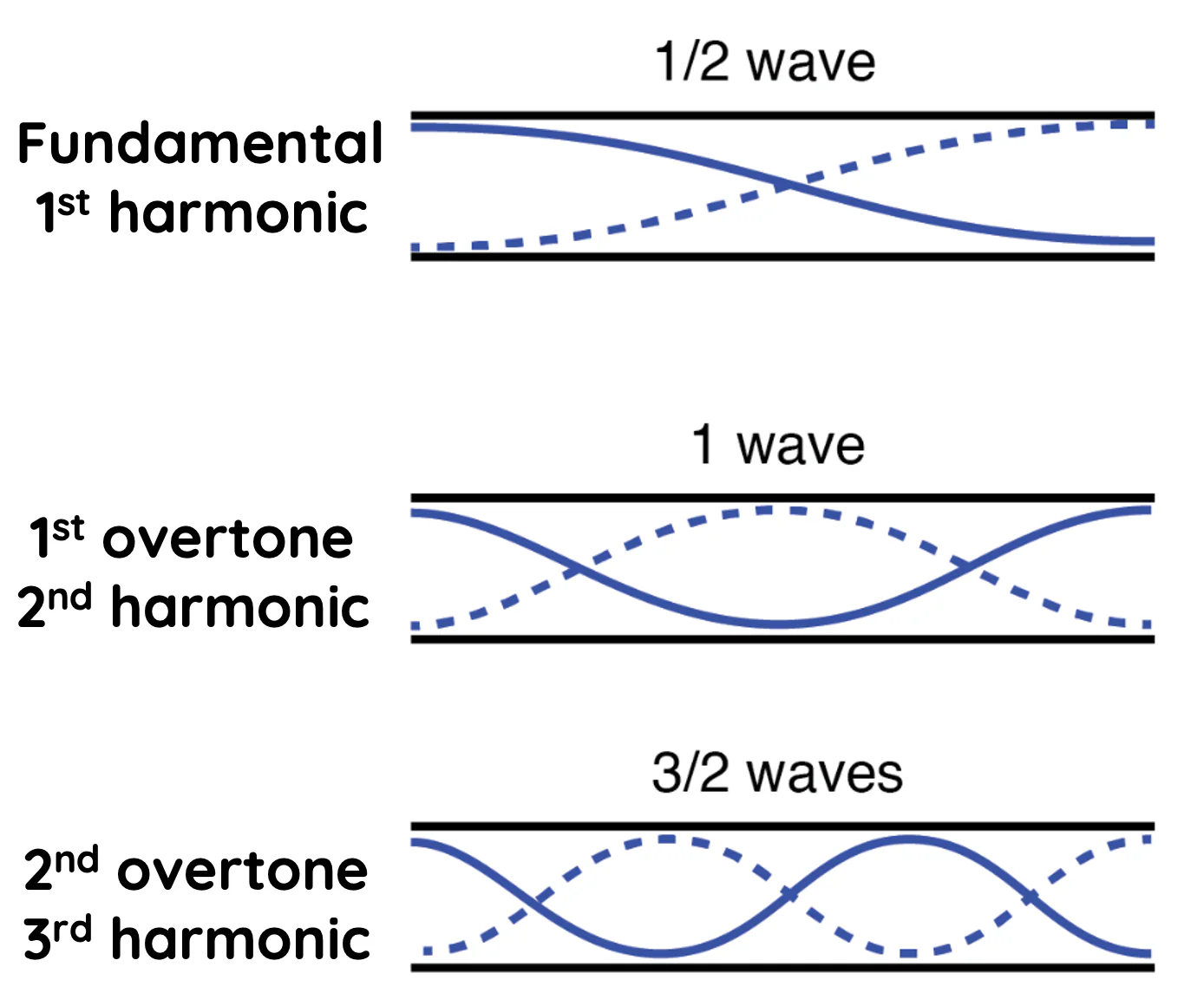
Double Slit Experiment
Minimum: path difference of multiples of 1/2 λ
Maximum: path difference of 0
Demonstrates the wave-like nature of light with the bright and dark fringes being characteristic pattern to waves (constructive/destructive interference)
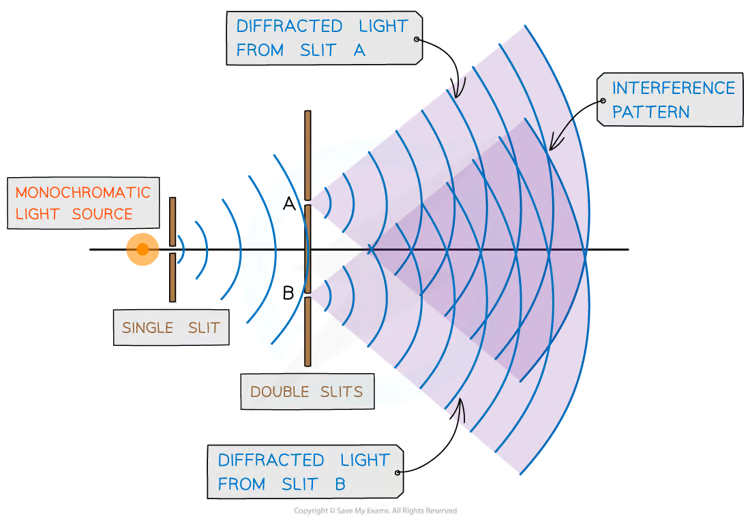
Coherent waves
Constant phase relationship.
A coherent light source is required for the double slit experiment for the interference pattern to be present
Path Difference
The difference in distance that two waves must travel from their sources to a given point
Wavelength from double slit experiment
λ = ax / D
a = fring spacing
x = slit separation
D = distance to screen
Diffraction grating
A grating with many slits means there are fewer angles far from central maximum at which constructive interference occurs → orders
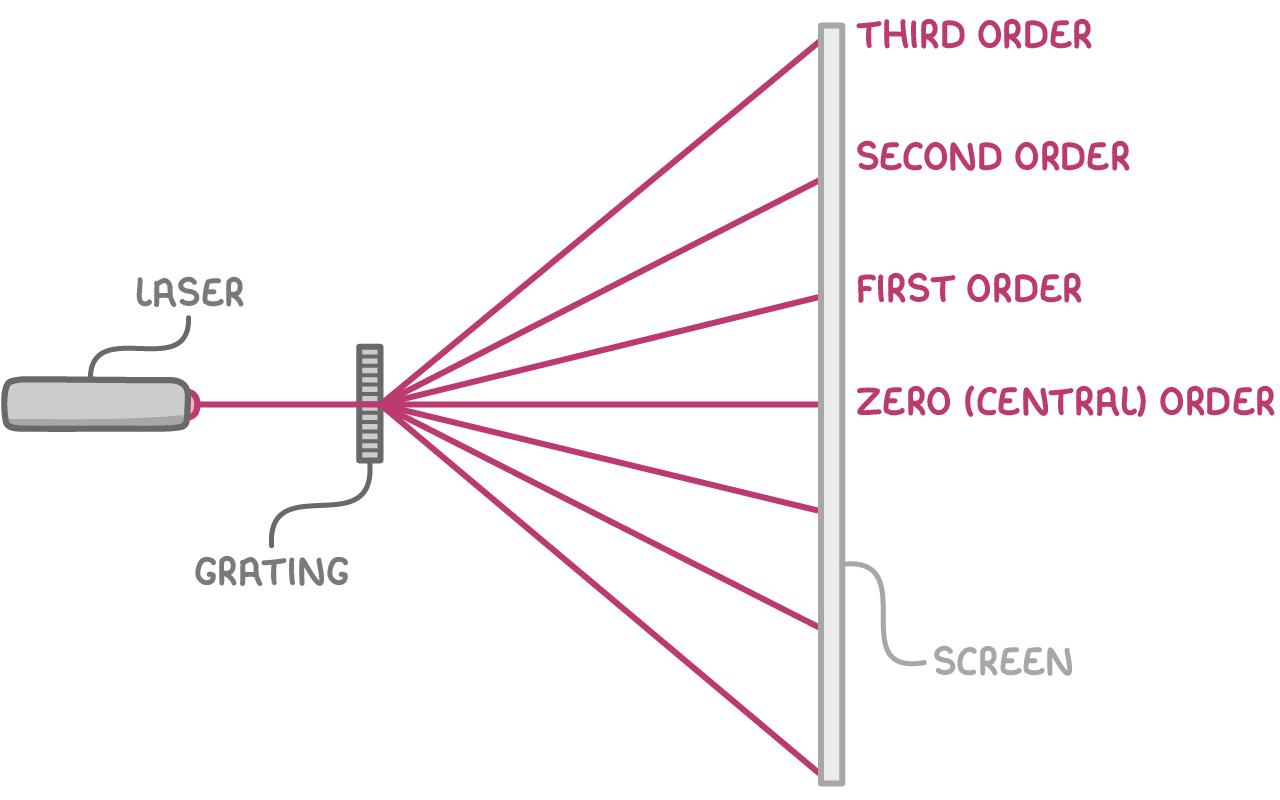
Diffraction grating equation
NOT IN FORMULA SHEET
d sin θ = n λ
d = grating spacing (m)
n = order (i.e: 1st order, 2nd order…)
θ = angle with zero order maximum
grating spacing
lines per mm (mm-1)
x 1000
lines per m (m-1)
reciprocal
grating spacing (m)
Highest visible order
d sin(90) = n λ
nmax = d / λ (rounded down)
visible orders = 2 x nmax + 1
2 of the orders on each side + zero order maximum
